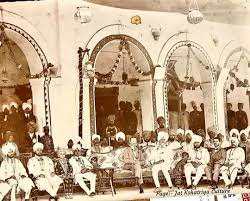
Jat Kshatriya Itihas – History of Jat Kshatriyas
The Jat Kshatriya community, as chronicled in “Jat Kshatriya Itihas,” embodies a rich tapestry of history, valor, and cultural resilience. Originating from the fertile plains of northwestern India, the Jats evolved from agrarian roots to assert themselves as formidable warriors and rulers, earning recognition as Kshatriyas through their military prowess and leadership. From the medieval kingdoms of Bharatpur under Maharaja Suraj Mal to their roles in regional politics and resistance against colonial rule, the Jat legacy is marked by resilience and independence. Their socio-cultural life, rooted in strong kinship bonds and communal solidarity, finds expression through festivals and customary practices that celebrate their agricultural heritage. Today, while navigating contemporary challenges such as socio-economic disparities and political representation, the Jat community continues to uphold its cultural heritage and strives for socio-economic progress, reflecting a dynamic blend of tradition and modernity.







